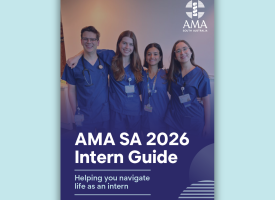Regional Training Networks - 2014
1. Background
1.1. Australians living in regional and remote areas generally experience poorer health than their metropolitan counterparts. [1] The imbalance in medical workforce supply, particularly in regional and remote Australia, is a contributing factor to the lower health status and life expectancy for people living in these areas.[2]
1.2. The structure of postgraduate medical training, with a focus on metropolitan centres for teaching and training, and an increasing trend toward specialisation, is affecting recruitment and retention in regional and rural areas. Centralisation and rationalisation of services, and insufficient numbers of generalists and specialists wanting to work in rural and remote areas impacts on the capacity of the medical workforce in these areas.[3]
1.3. A range of policy initiatives have been developed to provide rural training opportunities in medicine. Rural intake quotas for medical schools, rural clinical schools, bonding, expanding pre-vocational terms and scholarships have all been used to encourage doctors to practise in rural and remote locations with varying success. Recently, positive extended rural placements have been shown to be more effective at encouraging rural training than a rural background.[4]
1.4. Most efforts to address medical workforce maldistribution currently focus on medical school or doctors in established practice. Though excellent clinical training infrastructure and networks exist at an undergraduate level e.g. rural clinical schools and University departments of rural health,6 there are only a small number of coordinated rural training strategies during prevocational and vocational medical training.
1.5. With the exception of the Specialist Training Program (STP) and general practice training initiatives, where both rural training and rural generalist pathways have been established, specialist colleges generally offer trainees regional rotations from metropolitan centres. Only a small number of specialist training positions are based in regional hospitals with the option of rotating in to metropolitan centres for further training, and in a limited variety of specialties[5] ,[6]
1.6. While many medical students have positive training experiences in rural areas, progression through prevocational and vocational training often requires a return to metropolitan centres. At this point many trainees develop the personal and professional networks integral to their future life and career path. Such trainees are less inclined to return to practice in rural areas.
1.7. Regional training networks (RTNs) offer a potential solution to improving medical workforce maldistribution by enhancing generalist and specialist training opportunities, and supporting prevocational and vocational trainees to live and work, in regional, rural and remote areas.
1.8. As the number of medical graduates increase, expanding training capacity for junior doctors to undertake placements and work in regional areas is both logical and necessary. Increasing numbers of medical graduates has made it even more competitive to obtain a vocational training place. Based on the experience of other rural training pipeline initiatives,4 vocational trainees working in regional hospitals would be more likely to remain in practice in a regional location, and could offer significant benefits to their hospitals and regional community, particularly as they enter advanced training.
1.9. Building and retaining a critical mass of doctors within a region is important in improving the viability of practise as well as enhancing professional development.[7] Networking, peer support and mentoring will be an important consideration, particularly for locations that may only have one or two trainees of a similar speciality.
1.10. Flexible entry and exit points must also be a key feature of RTNs, in order to minimise barriers for trainees to transition between training in these networks and other settings and avoid stigma surrounding inflexible rural training pathways.
1.11. Current industrial arrangements are not well structured to support regionally based training programmes. Junior doctors who are rotating from metropolitan areas to regional areas often receive housing support, relocation and transport payments; however, doctors from regional areas rotating into metropolitan areas receive no access to such payments, despite the fact that housing and travel can be considerably more difficult to obtain on a short term basis. These issues serve as a further disincentive to train in rural or regional areas.7
1.12. Ultimately, creating viable, supported and attractive generalist and specialist training options for junior doctors wanting to live, train and practise in rural and regional locations will improve recruitment and retention of doctors in regional centres. This will improve the capacity of the rural health workforce, benefiting the health of rural Australians.
2. Position Statement
2.1. The AMA recognises the importance of a strong rural and regional generalist and specialist workforce to meet the health needs of Australians, particularly those in regional and remote areas.
2.2. Governments, their agencies, employers and training providers should collaborate to implement Regional Training Networks – vertically integrated networks of health services and regional training hubs of generalist and specialist prevocational and vocational training in regional areas incorporating flexible entry and exit points.
2.3. Functional and reciprocal links between tertiary, regional and rural hospitals, medical schools and medical colleges should be established and leveraged to build regional generalist and specialist training capacity, with access to metropolitan tertiary rotations for tertiary or subspecialty experience as required.
2.4. Regional Training Networks should build upon local knowledge and professional relationships, existing institutions and infrastructure and prior experience in establishing Rural Clinical Schools and similar training networks.
2.5. A regional approach to the governance of prevocational and vocational training should involve all relevant stakeholders, especially trainees and local communities.
2.6. The number of accredited regionally based generalist and specialist training places should be increased, with new Government funding for innovative models of medical training prioritised for the implementation of regional training networks.
2.7. Enhanced support and industrial arrangements must be developed for supervisors and trainees undertaking regional training.
3. Policy
3.1. The AMA calls for Regional Training Networks to be established, in order to:
(a) develop high quality and flexible generalist and specialist rural training pathways targeted at the regional level.
(b) provide trainees with access to sufficient breadth and depth of training and relevant terms in both larger metropolitan and smaller regional and rural centres.
(c) recognise there are regional centres that have the capacity to provide specialist training and provide rewarding careers after vocational training.
(d) maintain and enhance links between regional hospitals and major metropolitan centres, rural clinical schools, universities and medical schools to leverage infrastructure and resources to support additional prevocational and vocational training positions.
(e) build and maintain on a critical mass of doctors in a particular specialty in a locality.
(f) engage rural and metropolitan doctors and hospitals to establish functional regional governance and training models.
(g) provide trainees with positive experiences and appropriate support to encourage regional practice.
(h) build a medical workforce responsive to community needs including the health needs of Australians in regional and rural locations.
3.2. The AMA calls on Federal and State Governments, their agencies, health services and networks, and employers to:
(a) participate constructively in the local governance of Regional Training Networks, including provision of administrative support where required.
(b) fund additional generalist and specialist training places in regional areas, including sufficient administrative support, and consider reciprocal training arrangements for trainees to undertake metropolitan rotations.
(c) support improvements to industrial arrangements for trainees based in regional areas rotating into metropolitan areas, such that trainees based in regional areas are not disadvantaged compared to those based in metropolitan areas.
3.3. The AMA calls on the Learned Colleges, Postgraduate Medical Councils and training providers to:
(a) participate constructively in the governance of Regional Training Networks, particularly with respect to building upon local professional relationships and sharing experiences of establishing other similar regional training networks.
(b) examine the current barriers for accreditation of prevocational and vocational training posts in regional areas and develop mechanisms for accreditation of innovative posts that maintain high standards of quality.
(c) develop appropriate administrative, personal and professional support for the supervisors and trainees undertaking regional training.6
3.4. The AMA calls on medical schools to:
(a) participate constructively in the governance of Regional Training Providers, particularly with respect to sharing experiences of establishing Rural Clinical Schools and distributed delivery of medical education.
See also:
AMA Position Statement on Geographic Allocation of Medicare Provider Numbers 2002 – Revised 2014
AMA Position Statement on Medical Workforce and Training – 2013
AMA Position Statement on Fostering Generalism in the Medical Workforce – 2012
AMA Position Statement on Regional/Rural Workforce Initiatives – 2012
[1] Australian Institute of Health and Welfare 2008. Rural, regional and remote health: indicators of health status and determinants of health. Rural Health Series no. 9. Cat. no. PHE 97. Canberra: AIHW.
[2] Health Workforce 2025. Vol 3.
[3] AIHW 2014. Medical workforce 2012. National health workforce series no. 8. Cat. no. HWL 54. Canberra: AIHW.
[4] Clark TR, Freedman SB, Croft AJ et al. Medical graduates becoming rural doctors: rural background versus extended rural placement. Med J Aust 2013; 199 (11): 779-782.
[5] Health Workforce Australia [2014]: Rural Medical Generalist and Dual Trained Physician projects.
[6] http://www.ranzcog.edu.au/how-do-i-apply68/provincial-training-pathway-pilot.html
[7] Presentation. Prof Steve Tobin. 2014 AMA Trainee Forum. 15 March 2014.



